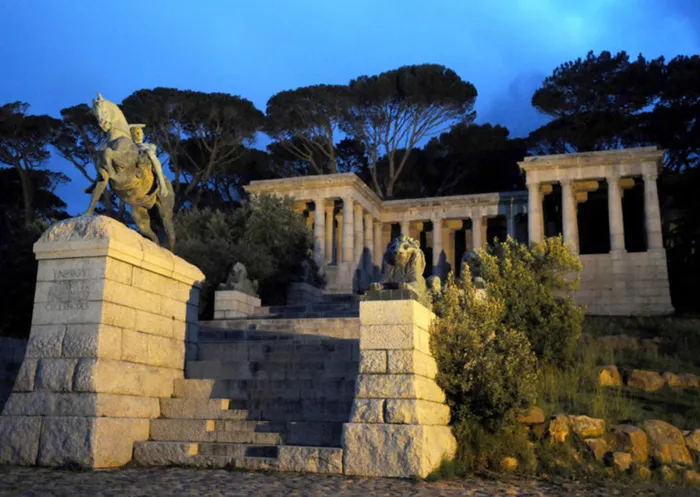Rhodes Memorial hits century mark

Cape Town - 120703 - Rhodes Memorial is 100 years old this year. PICTURE: DAVID RITCHIE Cape Town - 120703 - Rhodes Memorial is 100 years old this year. PICTURE: DAVID RITCHIE
The jury in the court of public opinion may have returned a majority “guilty” verdict on the political legacy of Cecil John Rhodes, but Cape Town still has reason to be grateful for the philanthropic nature of this arch imperialist, one-time prime minister of the Cape Colony and probably the richest man in Africa of his era.
In particular, land that he acquired and bequeathed to the nation in perpetuity includes Kirstenbosch botanic gardens, UCT and Rhodes Estate on the slopes of Devil’s Peak.
It was on this Devil’s Peak site that, 100 years ago yesterday, the memorial that bears his name was inaugurated. Today, Rhodes Memorial is one of the city’s most recognisable icons and a popular destination for visitors and residents alike, but its significance and symbolism are still the subjects of strong debate by historians.
There is also some dispute as to who decided on the final site of the memorial.
Some sources say it was that of Rhodes’s two close friends: prominent architect and memorial designer Sir Herbert Baker and the poet Rudyard Kipling, whose words “The immense and brooding spirit...” are inscribed below the bust of Rhodes that was fashioned in the likeness of Titus, the Roman emperor whom Rhodes considered he most resembled. Others say the decision was taken by a high-ranking committee made up of shareholders of major companies of which Rhodes had been a director: De Beers, the Chartered Company and Consolidated Goldfields of SA.
What is not in dispute is that the cost of the monument was met by means of a public subscription by residents of Cape Town, and that the site was a favourite of Rhodes who often sat on a bench – still there today – as he brooded over his plans for British expansion into Africa and of a railroad linking its colonies from Cape to Cairo.
And in the souvenir programme of the memorial’s dedication, Rhodes’s friend and Rhodes Scholarship trustee Earl Albert Grey wrote: “...Table Mountain was the centre of political creations of his dreams. It seemed therefore to the committee that here only should the national monument to him be erected.”
What’s also not disputed is that the monument is built of granite quarried on Table Mountain; has 49 steps to represent the years of Rhodes’s life; that its eight bronze lions are modelled on those protecting Nelson’s Column in Trafalgar Square, London; and that the bronze sculpture of a horseman by artist George Frederic Watts, titled Energy, reflects Rhodes’s personal drive and the character of the young men (then only men) he wanted to benefit from his scholarship fund.
In his 2005 dissertation The Historical Productions of Cecil John Rhodes in 20th Century Cape Town, then UWC Masters’ student Khayalethu Mdudumane explained that some historians argue that Rhodes is no longer a significant historical figure.
But he suggested that colonial monuments still “haunt” the post-apartheid present of SA, that the Rhodes Memorial symbolises the oppression of the black majority, and that it has historical significance “for those who… live in its shadow”. - Cape Argus